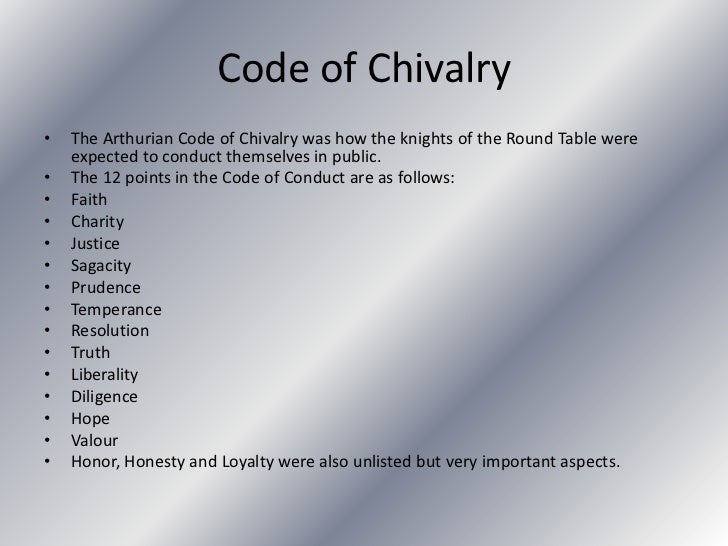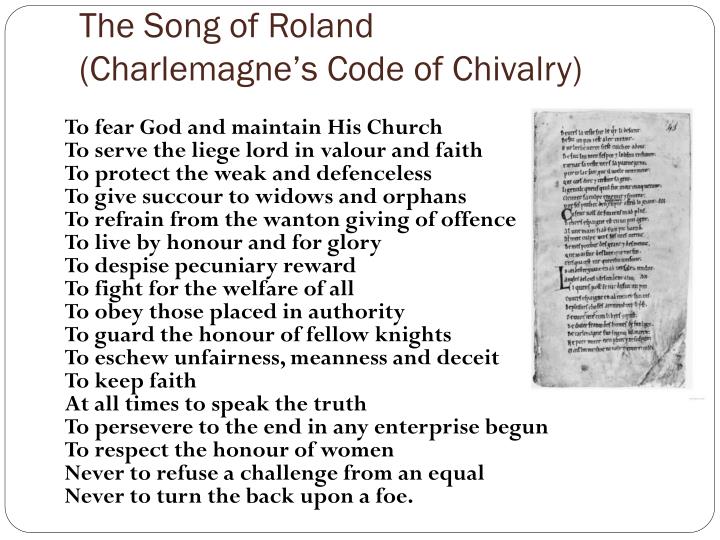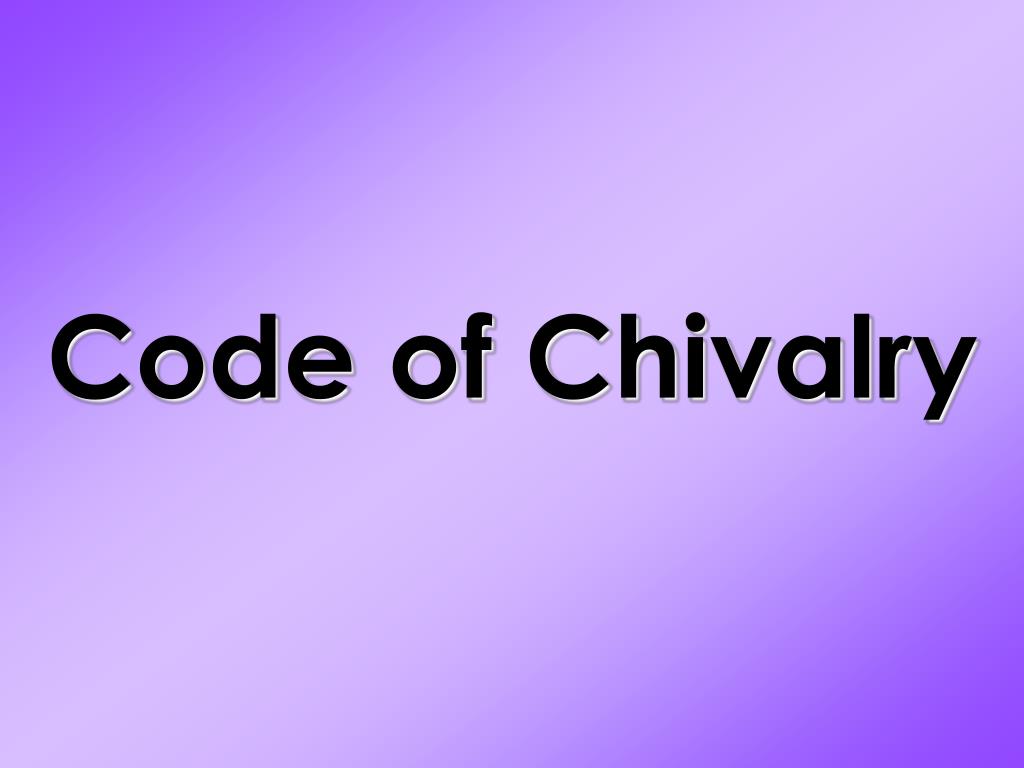

The best introductory discussion of chivalry is still Keen 2005, which has been updated in several editions. There are many general survey works on chivalry. The link between chivalry and high status was exemplified by the rise of chivalric orders, the elaboration of tournaments, and the promotion of heraldry as a sign of membership of this select group. At the same time, the number of men assuming knighthood went into decline, perhaps due to the costs of becoming a knight and equipping yourself, and so knighthood and its attendant chivalric ideals became increasingly elite. The clash of ideals between warfare and violence, and the peace required by religious devotion, was resolved with the rise of the Crusades and debates over Just War.
#The knights chivalry code manuals#
As the medieval period progressed, chivalric ideals were tackled in a range of written works-from biographies to comic tales and manuals of combat-as an attempt was made to define what chivalry was. A chivalric society arguably emerged in the 12th century with the rise of knighthood, and it really only applied to those who were part of militaristic elite nobles, knights, and men who fought. It came to mean more than just knighthood, as chivalry was used to describe a way of fighting, a set of ideals in warfare and in love, and a whole system of society based around the idea of the noble warrior. The word itself, which first appeared in English in 1292, derives from the French chevalier or knight, specifically a mounted knight.

Your browser does not support the audio element.Chivalry is a term that has many interpretations. Listen to a recorded reading of this page:.Take a ten question quiz about this page.Jousting was outlawed in France when King Henry II was killed in a joust competition in 1559.The word "chivalry" comes from the Old French word "chevalerie" meaning "horseman".Talented knights could become rich this way. Sometimes the winning knights won the losers' horses and armor.Tournaments, jousts, and pas d'armes were all part of a number of competitions called "hastiludes".In many ways, the knights of the Middle Ages were like the sports stars of today. Tournaments and jousts attracted crowds of people for entertainment.Sometimes a knight or group of knights would stake out a bridge and refuse to let other knights pass unless they fought.
#The knights chivalry code code#
Interesting Facts about Tournaments, Jousts, and the Code of Chivalry Not all knights followed the code, especially when it came to dealing with people of the lower classes. Many knights took vows that they would maintain the code. To follow the church and defend it with his life.

Here are some of the main codes which Knights tried to live by: The ideal knight would be humble, loyal, fair, Christian, and have good manners. Knights were expected to behave a certain way. Two Knights Jousting, one falling by Friedrich Martin von Reibisch The winners were heroes and often won prize money. Jousting was the highlight of many games and events. A joust was where two knights would charge each other and try to knock the other off their horse with a lance. Jousting was another very popular competition among knights during the Middle Ages. The best knight from each side was often awarded a prize. The lances used were blunted so that knights would not be killed, but many were still injured. This would continue until one side won.Īs you can imagine, tournaments were dangerous. This "turning" is where the name "tournament" or "tourney" comes from. The knights that were still on their horses after the first charge would turn and charge again.

At the sound of a bugle each side would lower their lances and charge. The tournament would begin with each side lining up and preparing for the charge. Both sides would parade past the spectators shouting war cries and showing off their armor and coat of arms. There would even be stands built where the local nobles could sit to watch. On the day of the tournament a large crowd would gather to watch. Typically the local knights fought against the knights from outside the area. When a town or area would have a tournament they would invite knights from other areas. Tournaments were pretend battles between groups of knights. Two Knights Jousting by Friedrich Martin von Reibisch


 0 kommentar(er)
0 kommentar(er)
